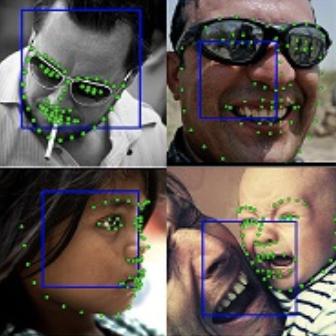Occlusion-Robust Face Alignment Using a Viewpoint-Invariant Hierarchical Network Architecture
The occlusion problem heavily degrades the localization performance of face alignment. Most current solutions for this problem focus on annotating new occlusion data, introducing boundary estimation, and stacking deeper models to improve the robustness of neural networks. However, the performance degradation of models remains under extreme occlusion (average occlusion of over 50%) because of missing a large amount of facial context information. We argue that exploring neural networks to model the facial hierarchies is a more promising method for dealing with extreme occlusion. Surprisingly, in recent studies, little effort has been devoted to representing the facial hierarchies using neural networks. This paper proposes a new network architecture called GlomFace to model the facial hierarchies against various occlusions, which draws inspiration from the viewpoint-invariant hierarchy of facial structure. Specifically, GlomFace is functionally divided into two modules: the part-whole hierarchical module and the whole-part hierarchical module. The former captures the part-whole hierarchical dependencies of facial parts to suppress multi-scale occlusion information, whereas the latter injects structural reasoning into neural networks by building the whole-part hierarchical relations among facial parts. As a result, GlomFace has a clear topological interpretation due to its correspondence to the facial hierarchies. Extensive experimental results indicate that the proposed GlomFace performs comparably to existing state-of-the-art methods, especially in cases of extreme occlusion. Models are available at https://github.com/zhuccly/GlomFace-Face-Alignment.
PDF Abstract| Task | Dataset | Model | Metric Name | Metric Value | Global Rank | Benchmark |
|---|---|---|---|---|---|---|
| Face Alignment | COFW-68 | GlomFace | NME (inter-ocular) | 4.21 | # 3 |




 300W
300W
 COFW
COFW
 WFLW
WFLW
